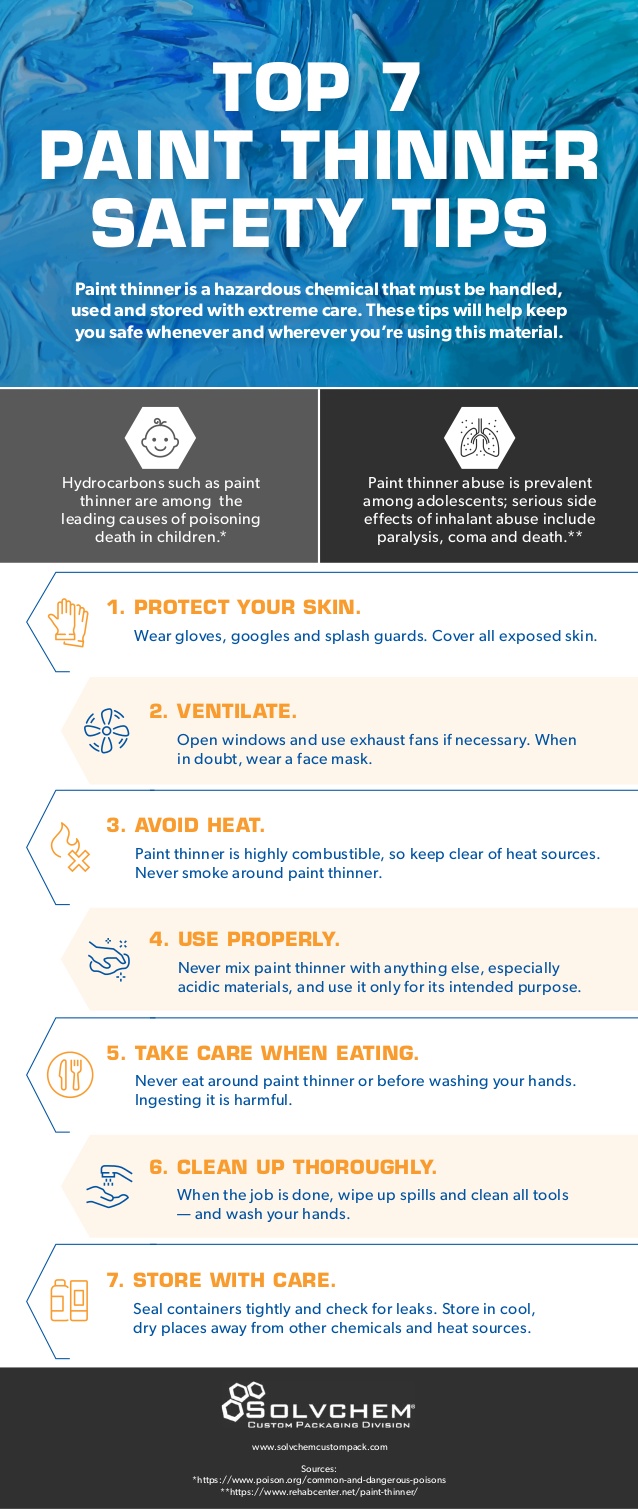If your family is currently considering a home renovation project using paint thinner, be cautious. While being vital to getting the perfect mixture of paint, it is still a highly hazardous material if not handled properly. The trace vapors alone could leave people with harsh symptoms such as a burning sensation in the mouth and throat, nausea and regular vomiting, shortness of breath and even brain damage if left too exposed. Thus the importance of using paint thinner properly and safely.
Another element of paint thinner that is often overlooked is its combustibility. With a flash point of around 104 degrees Fahrenheit, the slight interaction between your paint thinner and any heat source could result in a fire. In order to avoid any accidents leading to flames, this post will detail some tips to keep your entire family safe during your next home renovation project.
Skin Protection:
Table of Contents
For the utmost protection, your family could look to utilize protective gear such as gloves, goggles and splash guards while using the paint thinner. Always be sure to cover any exposed skin with long-sleeved clothing as well. Exposure to skin and eyes is most important to avoid.
Air It Out:
In order to avoid internal exposure, it is best to assess the ventilation situation prior to beginning any project. Opening all available windows nearest the rooms needed to be painted is most ideal. In some cases, there might not be enough windows to ensure proper ventilation. When necessary, you may be required to use external fans to cycle the fumes out.
Instructions First:
All paint thinner will have instructions printed somewhere on the packaging. Due diligence is important when using this product, so be sure to read the instructions thoroughly prior to use. In addition, always avoid mixing paint thinner with other products.
Storage is Important:
Safely sealing all product containers after use is highly recommended. A tight and secure seal ensures there will be little to no leakage while being stored and unused. The most ideal locations for paint thinner to be stored are in cool and dry places away from any source of heat in the home.
While these tips might serve as an excellent foundation for the safety of your family, it is important to do additional research when considering the threat of potential chemical-related injuries from these products. Safety should always come first in regards to the use of these products, and the best way to form safe habits is by using products the right way from the beginning. For more on paint thinner safety, be sure to review the infographic accompanying this post.
Author bio: Lynn lace is Vice President of Marketing for SolvChem Custom Packaging Division. She has 30 years of professional experience in the manufacturing industry and specializes in consumer packaged goods, new product development and strategic planning.


